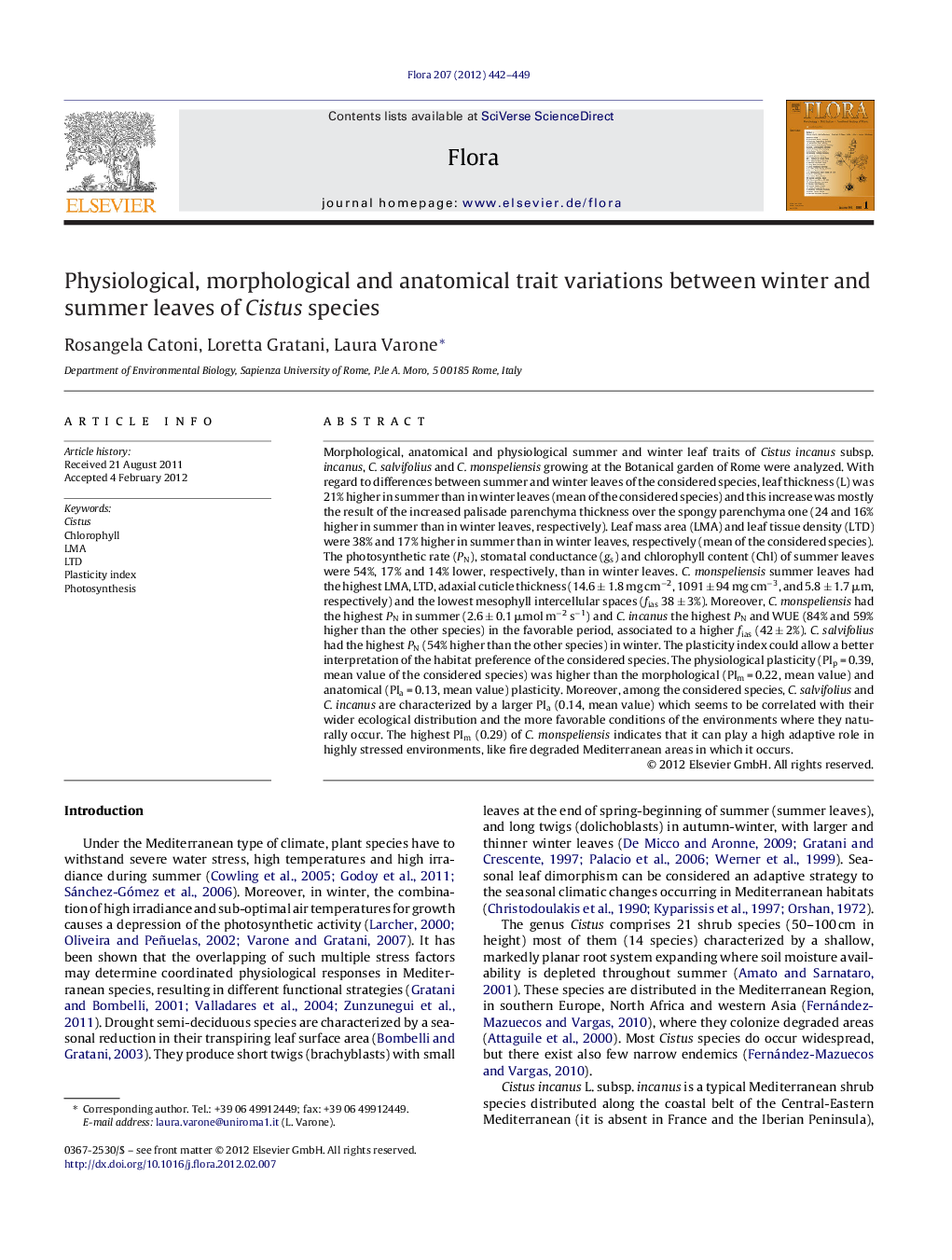| کد مقاله | کد نشریه | سال انتشار | مقاله انگلیسی | نسخه تمام متن |
|---|---|---|---|---|
| 2179643 | 1095068 | 2012 | 8 صفحه PDF | دانلود رایگان |

Morphological, anatomical and physiological summer and winter leaf traits of Cistus incanus subsp. incanus, C. salvifolius and C. monspeliensis growing at the Botanical garden of Rome were analyzed. With regard to differences between summer and winter leaves of the considered species, leaf thickness (L) was 21% higher in summer than in winter leaves (mean of the considered species) and this increase was mostly the result of the increased palisade parenchyma thickness over the spongy parenchyma one (24 and 16% higher in summer than in winter leaves, respectively). Leaf mass area (LMA) and leaf tissue density (LTD) were 38% and 17% higher in summer than in winter leaves, respectively (mean of the considered species). The photosynthetic rate (PN), stomatal conductance (gs) and chlorophyll content (Chl) of summer leaves were 54%, 17% and 14% lower, respectively, than in winter leaves. C. monspeliensis summer leaves had the highest LMA, LTD, adaxial cuticle thickness (14.6 ± 1.8 mg cm−2, 1091 ± 94 mg cm−3, and 5.8 ± 1.7 μm, respectively) and the lowest mesophyll intercellular spaces (fias 38 ± 3%). Moreover, C. monspeliensis had the highest PN in summer (2.6 ± 0.1 μmol m−2 s−1) and C. incanus the highest PN and WUE (84% and 59% higher than the other species) in the favorable period, associated to a higher fias (42 ± 2%). C. salvifolius had the highest PN (54% higher than the other species) in winter. The plasticity index could allow a better interpretation of the habitat preference of the considered species. The physiological plasticity (PIp = 0.39, mean value of the considered species) was higher than the morphological (PIm = 0.22, mean value) and anatomical (PIa = 0.13, mean value) plasticity. Moreover, among the considered species, C. salvifolius and C. incanus are characterized by a larger PIa (0.14, mean value) which seems to be correlated with their wider ecological distribution and the more favorable conditions of the environments where they naturally occur. The highest PIm (0.29) of C. monspeliensis indicates that it can play a high adaptive role in highly stressed environments, like fire degraded Mediterranean areas in which it occurs.
Journal: Flora - Morphology, Distribution, Functional Ecology of Plants - Volume 207, Issue 6, June 2012, Pages 442–449